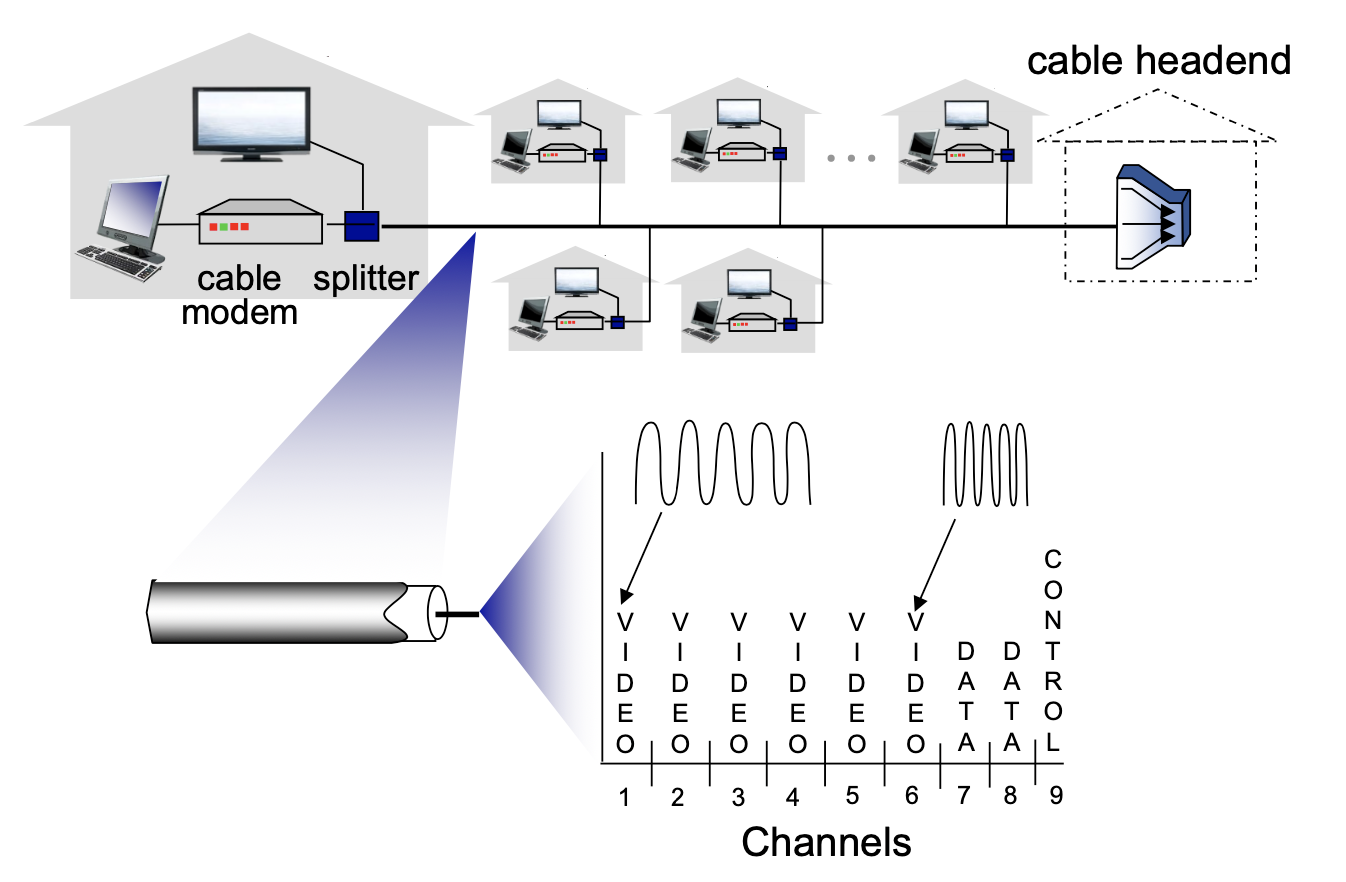Frequency Division Multiplexing (FDM)
Different channels transmitted in different frequency bands.
How FDM Works:
- Dividing the Bandwidth: The total available bandwidth of the communication channel (e.g., a cable, fiber, or radio wave spectrum) is divided into smaller frequency bands. Each band is wide enough to accommodate one signal.
- Assigning Channels to Frequency Bands: Each communication channel is assigned a unique frequency range (band). The signals from different sources are modulated onto carrier waves with different frequencies, and these carrier waves are combined into a single composite signal.
- Simultaneous Transmission: All channels are transmitted simultaneously over the medium because they occupy separate frequency bands. Since each channel uses a distinct part of the spectrum, they do not interfere with each other.
- Receiver Demultiplexing: At the receiver’s end, the composite signal is split back into individual channels by filtering out the different frequency bands. Each band is demodulated to retrieve the original signal.

FDM is a fundamental technology that allows multiple signals to be transmitted over the same medium by using different frequency bands. It is widely used in analog communication systems such as cable TV, radio, and older telephone networks.